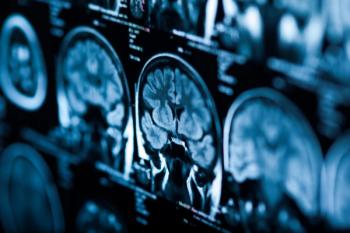
Neonatal brachial plexus palsy: Is prevention possible?
A thorough ACOG task force report confirms that NBPP is difficult to predict and prevent.
Dr. Lockwood, Editor-in-Chief, is Dean of the Morsani College of Medicine and Senior Vice President of USF Health, University of South Florida, Tampa. He can be reached at DrLockwood@advanstar.com.
My very first delivery as an ob/gyn intern was complicated by a severe shoulder dystocia. Fortunately for me, my attending was highly experienced. He methodically employed recently popularized maneuvers such as McRoberts and Wood’s before attempting to deliver the posterior arm-all to no avail. As my pulse quickened, he ultimately intentionally fractured the clavicle to effect delivery. Much to my surprise, there was no evidence of a neonatal brachial plexus palsy (NBPP).
In the thousands of deliveries that I have either performed or supervised since, while I have had some tough shoulder dystocia cases and a couple of transient NBPP episodes, I have miraculously been spared a case of persistent NBPP and the attendant lawsuit it would likely entail. My good fortune notwithstanding, I retain a healthy degree of post-traumatic stress at the thought of a shoulder dystocia and a nearly pathological fear of NBPP-and I suspect I am not alone.
While it is unlikely that the new American College of Obstetricians and Gynecologists (ACOG) NBPP task force report will eliminate this fear, the report is packed with useful information on the pathophysiology of the injury and certainly reinforces the argument that most cases of NBPP can be neither anticipated nor prevented, the claims of plaintiff attorney TV ads notwithstanding.1
Background
The ACOG task force was composed of 6 maternal-fetal medicine physicians, 4 of whom have strong track records of research on the topic. It also included a neonatologist, a neurosurgeon, a biomedical engineer, and a liaison from the Society of Obstetricians and Gynecologists of Canada. They conducted an exhaustive literature review seeking to provide definitive data on the incidence, pathophysiology, prediction, prevention, management, and prognosis of NBPP.
By definition, NBPP presents as a weak or paralyzed upper extremity with passive greater than active range of motion. The incidence of NBPP, 1.5 per 1000 total births, has been stable for multiple decades despite a modest increase in the occurrence of shoulder dystocia.
The rate during vaginal deliveries is 1.7/1000 total births and during cesarean deliveries 0.3/1000. Most cases of NBPP reflect upper cervical nerve root (C5 and 6) involvement leading to Erb’s palsy (1.2/1000 births) while a minority involve lower nerve roots (C8 and T1) injury leading to Klumpke’s palsy (0.05/1000 live births).1(p.9)
Most cases are transient, with only 15% persisting beyond 12 months. And while shoulder dystocia is the only reliable and consistent risk factor, 46% of cases occur in the absence of shoulder dystocia.1(p.10) These latter cases tend to involve the posterior arm, smaller babies, and more rapid second stages. They are also more likely to persist.
Prediction and pathophysiology
At least half of all NBPP cases follow shoulder dystocia, and the latter occurrence increases with increasing birth weight, particularly with birth weights greater than 4500 g. Unfortunately abdominal palpation has poor sensitivity in detection of fetal weights > 4500 g (15%) and the sensitivity of ultrasound is not much better (40%).1(p.15)
Thus, the frequent assertion by plaintiff attorneys that a defendant failed to detect macrosomia is without merit.
The occurrence of NBPP reflects a combination of excess force causing deformation (compression and/or stretch) of the brachial plexus with increased susceptibility of the nerves to injury due to factors such as the suddenness of the force, or pre-existing vulnerability (eg, increased in situ nerve strain, fetal acidosis). Endogenous forces are those generated by the mother via contractions or pushing.
Because force reflects pressure x area, it has been estimated that normal deliveries are associated with greater force on a fetus’s shoulder (111–167 N for an average male) than its head (92–120 N).1(p.26)
These endogenous forces on the fetus are generally compressive and exerted in an axial plane (ie, along or parallel to the fetal spine), but substantial lateral traction also can be exerted on the BP if the posterior shoulder is caught on the sacral promontory while the head descends, or if the anterior shoulder is caught up on the symphysis pubis.
Indeed, endogenous forces are substantially greater than the exogenous forces exerted by the accoucheur, which Allen and associates have estimated at around 47 N for a normal delivery, 69 N for difficult deliveries, and 100 N for shoulder dystocia, though such exogenous force is likely to have both axial and lateral components.2
Thus, it is easy to appreciate how NBPP can occur without the presence of a shoulder dystocia or excess exogenous lateral traction. Continued movement of the head with contractions and maternal Valsalva will exert endogenous lateral traction and stretch on the anterior shoulder and brachial plexus while contractions can cause similar stretching of the posterior shoulder and brachial plexus when they are retained by the sacral promontory during rapid descent without prior internal rotation.
Indeed, in the absence of any provider-derived exogenous force, in the setting of shoulder dystocia, maternal endogenous forces may create up to 15.7% stretch on the brachial plexus, more than enough deformation force to cause NBPP.1(p.34)
These findings underscore the importance of crafting a detailed delivery note particularly in the setting of NBPP involving the posterior arm, which clearly could not be caused by exogenous forces in the absence of accoucheur manipulation.
NEXT: PREDICTION, PREVENTION, AND MANAGEMENT >>
Prediction, prevention, and management
Predicting either shoulder dystocia or NBPP with anything approaching certainty is impossible, but there is a consensus that the following 3 clinical settings warrant alteration of the usual obstetrical management:
--Estimated fetal weight > 5000 g in the absence of diabetes and > 4500 g in its presence;
--A history of shoulder dystocia in a prior pregnancy, particularly if associated with persistent NBPP; and
--Consideration of midpelvic vaginal delivery when the estimated fetal weight is > 4000 g.
Bear in mind, however, that most cases of NBPP occur in the absence of these risk factors, underscoring the magnitude of the conundrum faced by obstetricians.
Once a shoulder dystocia is encountered, the keys to successful resolution include communicating with the nursing staff to initiate a McRoberts maneuver and provide suprapubic pressure, with pediatrics to prepare for a resuscitation, and with the mother to have her stop pushing.
No single maneuver is guaranteed to be successful but the consensus is growing that delivery of the posterior arm has the highest success rate for completion of the delivery.1(p.45)
Prognosis and therapy
In general, the greater the number of nerve roots involved, the poorer the prognosis. When the injury is limited to C5 and 6, 90% of infants will spontaneously recover. In contrast, involvement of C5 to T1 is associated with less than 50% recovery and if there is coexistent Horner’s syndrome (an indication of autonomic nerve involvement), there is essentially no chance of spontaneous recovery.1(p.56)
Fortunately, nerve reconstruction surgery (grafts and transfers), particularly if followed by a secondary reconstructive procedure, often improves function. Contemporary physical and occupational therapy techniques combined with neuromuscular electrical stimulation and Botulinum treatment of antagonistic muscles have all improved function and quality of life in affected infants.
Take-home message
A major breakthrough in our ability to predict fetuses at risk of NBPP is unlikely. However, we may be able to decrease the risk of it occurring by reducing the occurrence of both shoulder dystocia and fetal macrosomia through implementation of aggressive preconceptional weight loss and exercise programs in obese women coupled with aggressive antenatal glycemic control in gestational and pregestational pregnant diabetics.
Clinical prudence should be exercised before attempting operative vaginal deliveries in patients with suspected fetal macrosomia and cesarean delivery should be offered to patients with a prior affected infant or in whom an estimated fetal weight exceeds 5000 g in a nondiabetic or 4500 g in a diabetic.
Finally, having a well-trained labor and delivery team and reflex-like performance of appropriate maneuvers, especially delivery of the posterior arm, may reduce the likelihood of NBPP once a shoulder dystocia has been detected. However, even in the most expert of hands, many-and I believe most-cases of NBPP cannot be prevented and are certainly not caused by the obstetrician’s often life-saving interventions.
Thus, it is high time for legislatures and courts to act to prevent unjust and irrational lawsuits in response to this tragic injury and to establish no-fault NBPP compensation pools to properly support the rehabilitation of affected children.
REFERENCES
1. The American College of Obstetricians and Gynecologists. Task Force on Neonatal Brachial Plexus Palsy. Neonatal Brachial Plexus Palsy. 2014.
2. Allen R, Sorab J, Gonik B. Risk factors for shoulder dystocia: an engineering study of clinician-applied forces. Obstet Gynecol. 1991;77:352–355.
Newsletter
Get the latest clinical updates, case studies, and expert commentary in obstetric and gynecologic care. Sign up now to stay informed.











